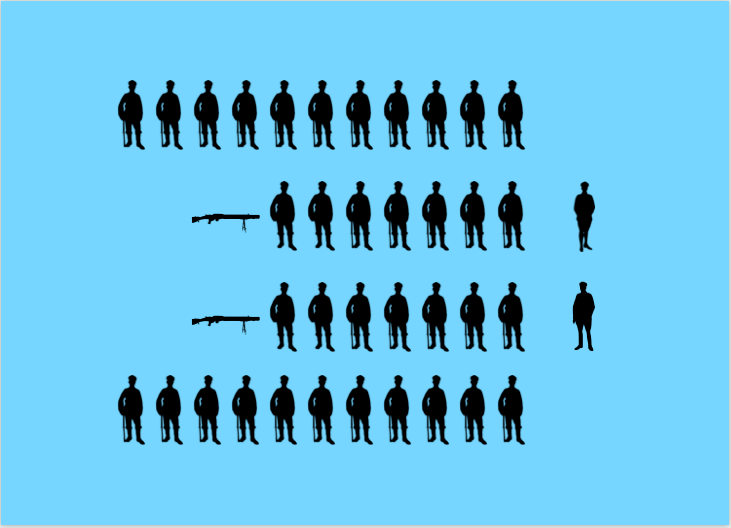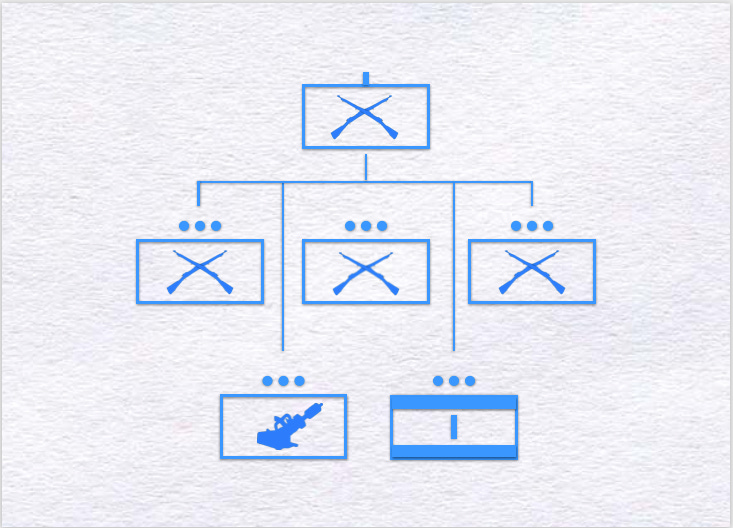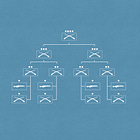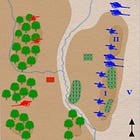Recently, while looking for something else, I ran across a table of organization for a rifle company of the Baltic Landeswehr. Not to be confused with the Landwehr of the German armies of the First World War, the Landeswehr was a short-lived force, composed largely of ethnic Germans, that fought in the Baltic Wars of Independence.
Alas, while this chart gives lots of details about the headquarters and service echelon of an ideal rifle company, it provides no direct description of the structure of the combatant elements. Rather, it merely tells the reader that, in addition to the specified specialists (such as messengers, wagon drivers, and cooks), the company consisted of:
one company commander
one first sergeant [Feldwebel]
four platoon commanders [Zug-Führer]
three senior sergeants [Ober-Feldmeister]
seventeen sergeants [Feldmeister]
one hundred and eight volunteers [Freiwillige]
The table also indicated that the company possessed six light machine guns and two grenade launchers.
The presence of four platoon commanders suggests the possibility that the fighting echelon was organized into four small rifle platoons (each of twenty-four volunteers) and a grenade-launcher section (of twelve volunteers.) This hypothesis, however, runs afoul of the number of light machine guns in the company.
While two platoons would have possessed two light machine guns apiece, each of the two remaining platoons would have been obliged to make do with one weapon of that type. Similarly, the presence of three (rather than four) senior sergeants would have complicated the employment of those leaders as platoon sergeants, leaving one platoon commander without an assistant of that rank.
With these things in mind, it is far more likely that the combatants of the company were formed into three rifle platoons (each of thirty-two volunteers) and a grenade-launcher platoon. (The grenade-launcher platoon would have been little larger than the grenade-launcher section of the first hypothesis. However, the fact that it was led by an officer would have increased the chances of it being styled as a platoon [Zug] rather than a section [Halb-Zug] or squad [Gruppe].)
A rifle platoon of thirty-two volunteers could have been divided into four squads, each of eight volunteers. Alternatively, the Landeswehr could have anticipated the Finnish solution to this problem of dividing each platoon into two ten-man rifle squads and two six-man light machine gun squads.1 In either case, each rifle platoon would have required four squad leaders.

The allocation of four squad leaders to each rifle platoon (for a total of twelve) and two to the grenade-launcher platoon would have matched fourteen sergeants with suitable assignments. As the rifle company rated a total of twenty sergeants, three of which were specialists, this structure would have left three sergeants looking for appropriate billets.
The three specialized sergeants were given charge of medical services [Sanitäts-Feldmeister], food for horses [Futter-Meister], and food for men [Küchen-Feldmeister]. However, when it came to the twelve messengers, five craftsmen, and the wagons that carried things other than food or medical supplies, no sergeant was listed. Thus, I would not be surprised if one of the remaining sergeants ran the company message center; another supervised the work of the mechanic, the tailors, and the shoemakers; and a third led a team of teamsters.2
Source: Oberstab der Baltischen Landeswehr, Abteilung Ia Stärke-Nachweisungen für eine Infanterie Kompanie (23 August 1919) (Bundesarchiv R 8025/3)3
Note: For the sake of readers who are new to the German language, I have used hyphens to separate compound words into their component parts.
For Further Reading:
To Support, Share, or Subscribe:
The diagram depicts the light machine guns of an ideal platoon as Lewis guns. However, the arsenal of the Landeswehr also included Bergman light machine guns and 08/15 Maxim guns.
Strange to say, while the table of organization identifies three two-horse wagons as l.M.G. Wagen, it makes no explicit provision for the transportation of the grenade-launchers and their associated ammunition.
As Folder R 8025/3 contains 212 pages, and weighs in at 341 megabytes, I have placed a copy of the table of organization in the Military Learning Library.










Thanks for this. It's very interesting. But at some point I would like to have more on the financing and political backing of this Baltic Landeswehr, especially in light of the subsequent history of the Balitc Germans.
Thanks very much for following up. DS